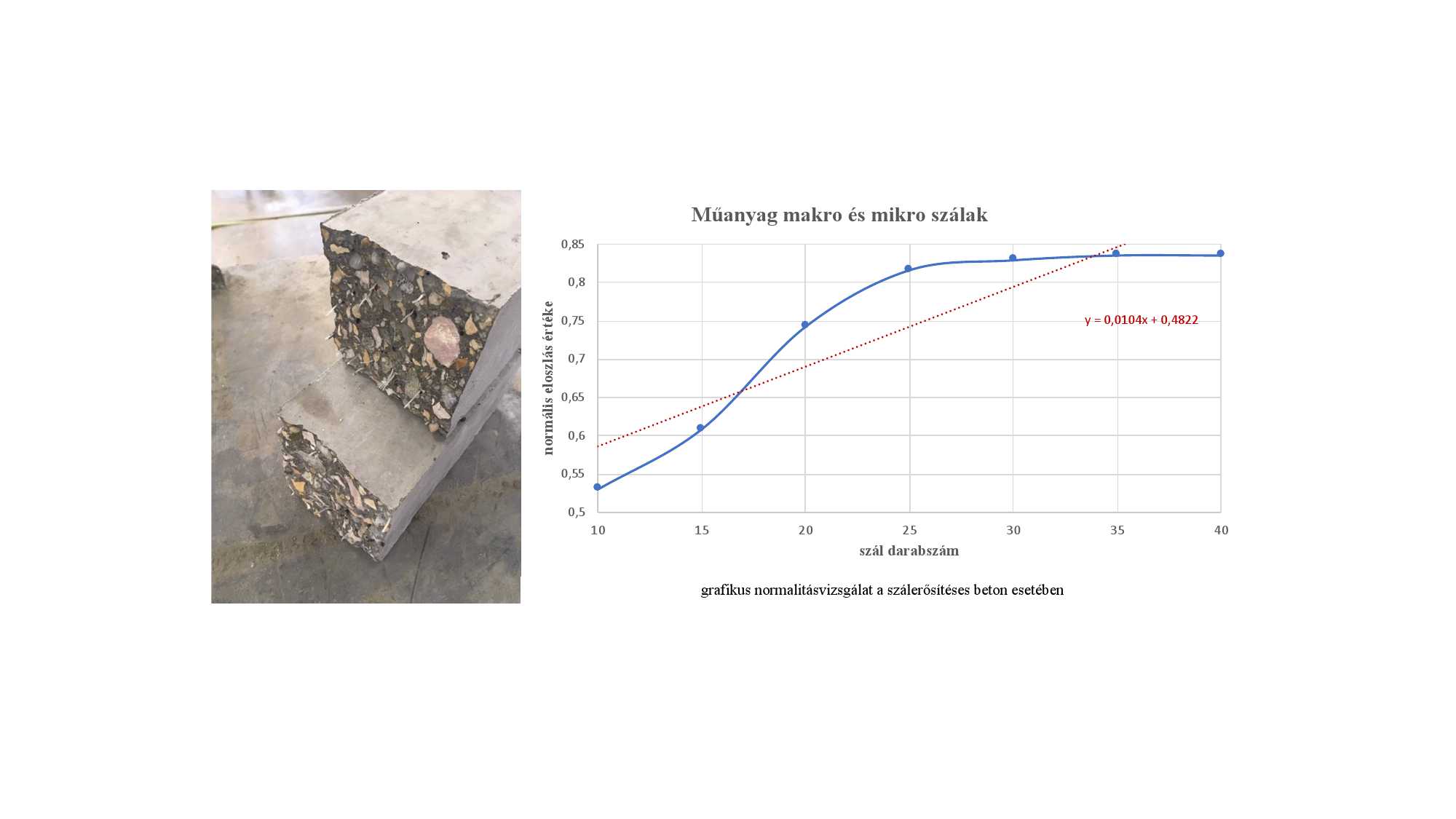
Normality test for fibre distribution of FRC beams
In the past, a normal distribution of all biological, chemical, physical processes, and quantities was assumed, until Edward Lorenz— the father of chaos theory — pointed out the opposite. Based on his observations, it turned out that in many areas of life the normal distribution is not fulfilled, as previously assumed. It is often difficult to establish any regularity in a given phenomenon, since experiments can be influenced by a number of factors. Until now, the fibre reinforced concretes could not give a consistent opinion on the type of distribution observed for the fibres mixed into the concrete due to the high dispersion of experiments. In the thesis I am looking for the answer to the question of whether in the case of concrete beams produced in a laboratory environment and broken in half under load, there is a regular distribution in the number of torn and pulled-out fibers in the broken cross section.
For the calculations I used the experimental results of Péter Juhász, Péter PhD, Olivér Czoboly and Mária Tóth Transylvanianné.
Preliminary studies showed a normal distribution, a hypothesis supported by several methods. I analyzed the range of the standard margin of error for flattening and skew and the symmetry of the bell curves. After determining the standard deviation values, I made frequency distributions and then performed a graphical normality test.
The other important study was the calculation of the percentage deviation from the sample average of the average value of fibres in fractional cross-section. I estimated the number of experiments required for each type, for a given mean and standard deviation value, for 1; 5; To achieve 20% accuracy.
I went on to compare the averages of the split cross-sectional thread counts from experiments with the values of the formulae in the literature estimating the expected distribution.
I also examined what factors have an effect on the distribution of fibres, whether the distribution changes by increasing the length size of the fibres or the mixing time of the concrete, or in the case of different concrete grades.
In the experiments, the split cross sections were divided into equally sized bands, allowing the evaluation of the similarities and differences between the bands. In the thesis, I also asked whether it can be observed that the fibre distribution of the middle bands differs from the values of the outer bands, so that the formwork effect significantly affects.